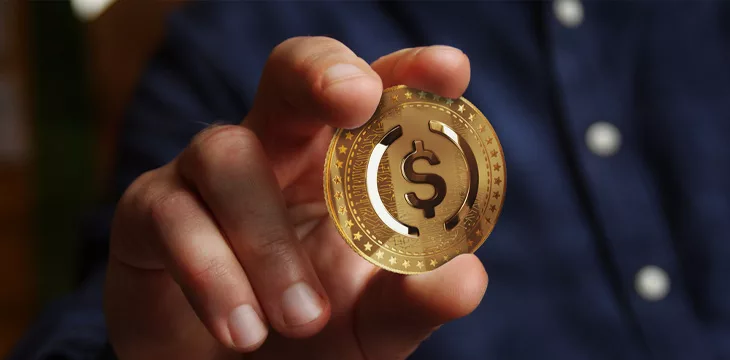|
Getting your Trinity Audio player ready...
|
The U.S. House Subcommittee on Digital Assets, Financial Technology, and Inclusion convened on May 18 for a dedicated hearing on stablecoins and legislators’ attempts to regulate them.
Entitled “Putting the ‘Stable’ in ‘Stablecoins’: How Legislation Will Help Stablecoins Achieve Their Promise,” the hearing is part of renewed attempts by lawmakers to reach a consensus on a bill that would address stablecoin regulation after earlier attempts broke down. Representatives from opposite sides of the aisle—Maxine Walters and Patrick McHenry—were co-drafting a version of the bill beginning last year, but an agreement couldn’t be reached before the end of the Congressional session, and the bill was abandoned.
This time trying a different tack, Walters and McHenry tabled two competing stablecoin drafts.
Perhaps more than in any of the numerous House hearings on digital asset regulation which have taken place this year, Thursday’s hearing showed a House divided on how best to answer the stablecoin question. As an illustration of this, subcommittee members in attendance couldn’t even reach a consensus on whether the two new drafts amounted to Congress ‘starting from scratch,’ as Representative Walters has said.
“I want to be clear that while we noticed two different legislative proposals today, we are not starting from scratch,” said Rep. French Hill (R-AR), chair of the subcommittee on digital assets.
“To do so would have ignored all the effort that was made and the common ground that was found during negotiations on the previous proposal.”
Though not an encouraging sign for bipartisan cooperation on the issue, there is certainly overlap between the two bills submitted for consideration in the hearing. Both contain provisions focused on consumer protection, and both establish minimum standards that must be adhered to by stablecoin issuers, for example, those relating to capital requirements.
However, a primary point of contention is who exactly should regulate stablecoins and what powers they should be granted to do so.
While both bills give responsibility for licensing stablecoin issuers to state authorities, the Democrat proposal would provide power to the Federal Reserve Board giving them the final say on what stablecoins are issued. The Republican bill does not.
The Democrat concern is that leaving licensing solely in State hands would encourage regulatory arbitrage within the U.S., with issuers flocking to states with the least-onerous requirements.
“A race to the bottom is the custom of this industry: to go offshore and seek areas of least regulation,” said Rep. Stephen Lynch (D-MA).
The Republican concern is with assigning too much work to the Federal Reserve, which may not be equipped to fulfill the role of de facto veto of state stablecoin licensing.
“Much like the dual banking system, there should be an opportunity for stablecoin issuers to be regulated on both the state and the federal level,” said Republican Rep. Mike Flood.
Another key difference between the two draft bills is that the Democrat proposal requires stablecoin custodians—be they the issuer, exchange, or other custodian—to keep stablecoins segregated from the rest of the custodian’s assets. The Republican proposal does not.
The division did not cut solely across the political aisle: while there is support among both Democrats and Republicans for a framework of some kind to be instituted, both sides also have Representatives who would instead not introduce any regulation at all.
Rep. Sean Casten (D-IL) was skeptical of the overall project of regulating stablecoins, cautioning the Subcommittee against unnecessarily introducing digital assets into the regulated financial system.
“There’s a good case for blockchain, there’s a good case for Web3, there’s a good case for distributed legers. Why are we creating a currency within that mix that has access to our financial system?” he asked.
The hearing also heard testimony from several witnesses, including Matt Homer, the former Executive Deputy Superintendent of Research and Innovation at the New York Department of Financial Services.
“Stablecoins will happen regardless of whether we want them to or not,” he told the Subcommittee. “Off-shore issuers are as free to create dollar-backed stablecoins as U.S. issuers. We should have done it in the U.S. so we can regulate it on our own terms.”
Lynch asked Homer for his thoughts on the recent Securities and Exchange Commission’s Wells Notice issued against Paxos in connection with issuing an unregistered security, Binance USD. He said he felt it was a mistake resulting from an incorrect application of the Howey test, saying that a person buying a stablecoin can hardly be said to have a reasonable expectation of profit.
Homer’s analysis misses some nuance in whether a true stablecoin could ever be a security. Though, in theory, a stablecoin is ‘stable,’ the reality is that they are often ‘stably’ pegged to digital assets, which are securities. In that instance, the stablecoin would be a clear security.
Although Homer’s analysis may be incomplete, his comments illustrate the range of views on stablecoins and the nuances hiding in plain sight when considering how best they should be regulated. Add to those partisan divisions within Congress, and most of the work toward the goal of stablecoin regulation lies ahead.
Watch: U.S. Congressman Patrick McHenry on Blockchain Policy Matters

 01-21-2026
01-21-2026 




